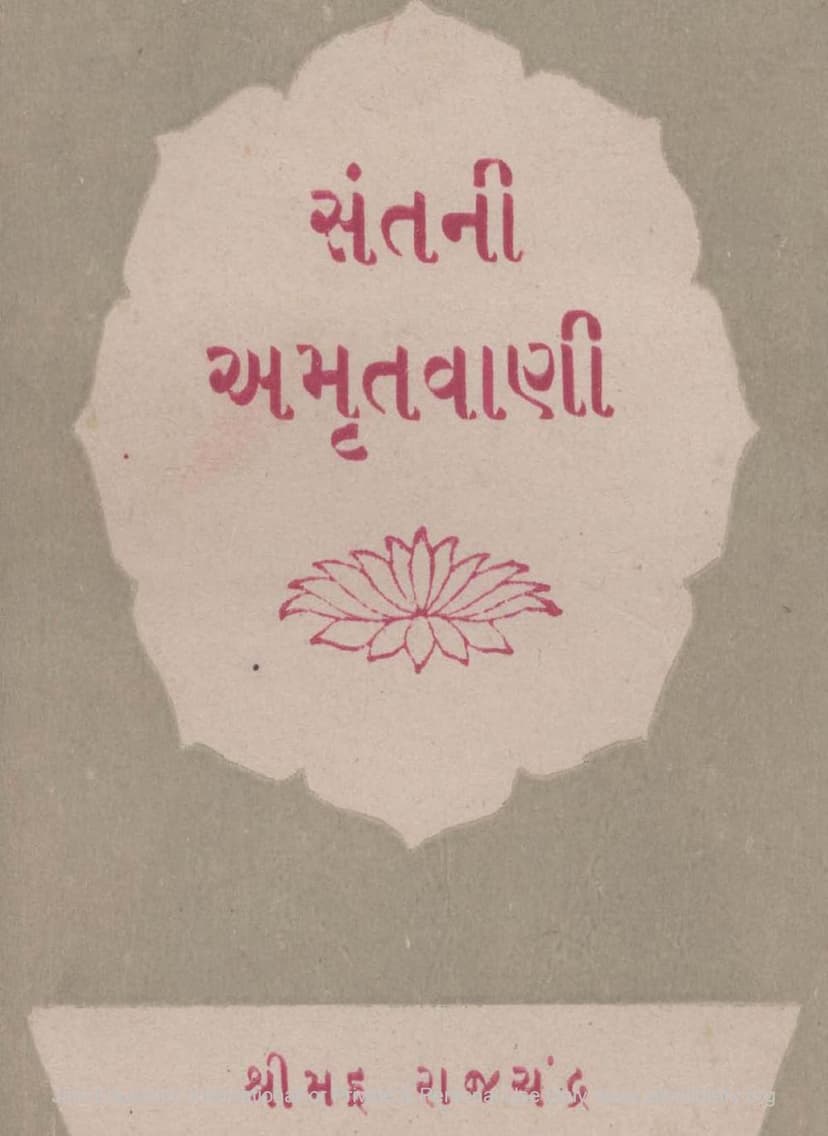Santni Amrut Vani
Added to library: September 2, 2025

Summary
Here's a comprehensive summary of the Jain text "Santni Amrut Vani" by Punyavijay, based on the provided pages:
Book Title: Santni Amrut Vani (The Nectar-like Words of Saints) Author: Punyavijay (Compiler) Publisher: Jamnadas P Sheth, Mumbai Catalog Link: https://jainqq.org/explore/005024/1
This book is a compilation of profound spiritual teachings, primarily drawn from the enlightened words of Shri Atmanandi Muni Shri Rajchandraji (Shri Hemchandracharya), a revered Jain Acharya and a spiritual guide. The compiler, Punyavijayji, has gathered these nectar-like sayings, aiming to inspire spiritual growth and self-realization in the reader.
Core Themes and Teachings:
The central focus of "Santni Amrut Vani" is the understanding and realization of the true nature of the soul (Atma). The teachings emphasize the following key concepts:
- The True Self (Atma): The book repeatedly stresses that the soul is distinct from the body and all other worldly possessions. It is pure, conscious, eternal, and inherently blissful. The essence of the teachings is to recognize this true self, which is often overshadowed by worldly illusions and ignorance.
- Discrimination between Soul and Non-Soul (Jiva and Ajiva): A fundamental principle taught is the ability to differentiate between the conscious soul (jiva) and the inert matter (ajiva). Understanding this distinction is crucial for spiritual progress.
- The Path to Liberation (Moksha): The ultimate goal presented is liberation from the cycle of birth and death (samsara). This is achieved through self-knowledge, renunciation of worldly attachments, and the cultivation of pure spiritual qualities.
- Renunciation and Detachment (Vairagya and Asanga): The teachings highlight the importance of detachment from worldly pleasures, possessions, and relationships. This detachment is not mere outward show but an inner state of indifference to worldly glories and attractions.
- Self-Control and Discipline (Sanyam and Indriya Nigraha): Controlling the senses and mind is presented as a vital aspect of the spiritual journey. The book encourages restraint over desires and impulses that lead to worldly entanglement.
- The Importance of a Guru (Satsang): The guidance and teachings of a true spiritual master (Satsang or Sadguru) are considered indispensable for understanding the soul's true nature and navigating the spiritual path. The book emphasizes the immense value of their teachings and the need for unwavering faith in them.
- The Nature of Knowledge and Ignorance: True knowledge (Jnana) is about realizing the self, while ignorance (Ajna) is the misconception of identifying with the non-self. The teachings aim to dispel ignorance and illuminate the path of knowledge.
- The Six Essential Truths (Shatpad): The book elaborates on six fundamental principles that are crucial for right understanding (Samyak Darshan):
- The Soul exists.
- The Soul is eternal.
- The Soul is the doer (of its own actions).
- The Soul is the experiencer (of the fruits of its actions).
- The Soul is the state of liberation (Moksha).
- The Soul is the means to liberation.
- The Illusion of the Self (Ahamkara and Mamata): The book addresses the root causes of suffering: ego (ahamkara) and possessiveness (mamata). Overcoming these illusions is key to self-realization.
- The True Meaning of Dharma: Dharma is presented not as external rituals or dogma, but as the inherent nature of the soul. It is the path of self-realization and liberation.
- Mindfulness and Contemplation: The text encourages constant contemplation and meditation on the true nature of the self. Through focused attention and right understanding, one can attain spiritual realization.
- The Preciousness of Human Life: The human birth is highlighted as a rare and invaluable opportunity for spiritual progress. The teachings urge readers not to waste this precious life in worldly pursuits.
- The Path of Detachment: The book advocates for a life of detachment, where worldly possessions and experiences are viewed without attachment or aversion, leading to inner peace and equanimity.
Structure and Content:
The book is structured as a collection of sayings, often presented with references to "Ank" (verse number) from Shri Rajchandraji's works. It covers a wide range of spiritual insights, from the philosophical understanding of reality to practical guidance for spiritual practice. The language is profound and often poetic, aiming to inspire deep reflection.
Key Message:
"Santni Amrut Vani" serves as a guide for the sincere seeker, illuminating the eternal truth of the soul and the path to ultimate freedom. It emphasizes the power of self-knowledge, detachment, and the grace of a true guru in achieving spiritual liberation. The teachings are meant to be meditated upon, understood deeply, and practiced diligently to transform one's life and attain the highest spiritual state.
The book includes an introduction by the publisher and a dedicatory note from the compiler, expressing deep reverence for Shri Atmanandi Muni Shri Rajchandraji. The inclusion of a tribute by Mahatma Gandhi further highlights the profound impact of Shri Rajchandraji's spiritual teachings.